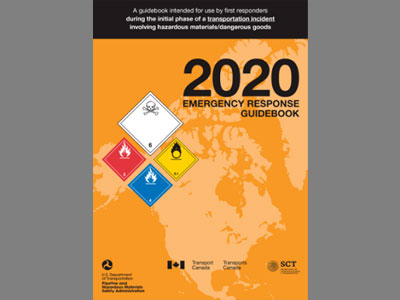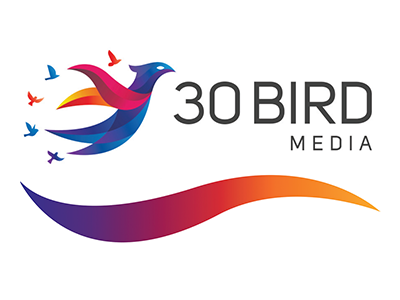 |
Food Allergy Basics: Symptoms and Triggers |
1.00 |
Welcome to Food Allergy Basics: Symptoms and Triggers. This course identifies the symptoms and triggers of food allergies.
Course Learning Objectives:
- Define food allergy.
- Identify the foods that cause 90% of all food allergies.
- List the symptoms of food allergies. |
 |
Food Allergy Basics: Emergency Response |
1.00 |
Welcome to Food Allergy Basics: Emergency Response. This course is focused on how to use a Food Allergy and Anaphylaxis Emergency Care Plan to care for a child with a food allergy.
Course Learning Objectives:
- Explain the correct use of the Food Allergy and Anaphylaxis Emergency Care Plan.
- Identify the six rights of medication administration. |
 |
Transition Planning: Preparing Students with IEPs for Life After High School |
1.00 |
This course covers transition planning for paraprofessionals and teachers. Transition planning is a process that supports movement from school to post-school activities for a student with a disability. It’s a set of coordinated activities focused on improving the academic and functional achievement of the student as they move into various post-secondary vocational and educational settings. |
 |
Emergency Response Guidebook Activity |
1.50 |
This course is an activity that requires the first responder to utilize the Emergency Response Guidebook to solve a variety of problems. The solution to each of these problems can be found using the 2020 Emergency Response Guidebook Version. Students will need to have a copy of the Emergency Response Guidebook Version 2020 to complete this activity. A 2020 Emergency Guidebook PDF is available for download in this lesson if a copy of the book is not available to the student.
It should be noted that this is an in-service training activity. The student must have prior knowledge and training regarding the Emergency Response Guidebook prior to engaging this activity.
|
 |
CompTIA Cybersecurity Analyst+ (CySA+) CS0-003 Exam Prep |
1.00 |
Exam Prep to accompany 30 Bird's CompTIA Cybersecurity Analyst+ (CySA+) CS0-003 course. |
 |
Safe Infant Sleep: SIDS and the Safe Infant Sleep Position |
1.00 |
This course is focused on the American Academy of Pediatrics’ best practice recommendations for reducing the risk of Sudden Infant Death Syndrome (SIDS) and Sudden Unexpected Infant Death (SUID) and for promoting safe sleep in infant care settings.
Course Learning Objectives:
Define Sudden Infant Death Syndrome (SIDS) and Sudden Unexpected Infant Death (SUID), and their relationship to safe infant sleep in infant care settings.
Identify safe infant sleep position and safe sleep environments. |
 |
STEM and You |
1.00 |
As early childhood professionals, we’ve all heard the term STEM. It stands for Science, Technology, Engineering, and Mathematics. But do you think you would recognize STEM in action if you saw it? Let’s find out!
Course Learning Objectives:
- Define STEM in the context of early childhood education.
- Recognize the impact of a teacher’s attitude toward STEM on their instructional practice. |
 |
Infectious Diseases: Causes and Symptoms |
1.00 |
An infectious disease is an illness that is caused by organisms such as bacteria, viruses, fungi, and parasites. Many of these organisms live in or on our bodies, and are normally harmless. But under certain circumstances, they can cause disease.
Course Learning Objectives:
- Describe infectious disease, and the ways in which germs that can cause infectious disease are spread.
- Identify common symptoms of infectious diseases, and why young children are vulnerable to infectious diseases. |
 |
Infectious Diseases: Environmental Management |
1.00 |
This course is focused on reducing the risk of infectious diseases in early care and education environments.
Course Learning Objectives:
List environmental management strategies for reducing the spread of germs that cause infectious disease. |
 |
Infectious Diseases: Daily Health Check |
1.00 |
This course is focused on the daily health check, and how it relates to policy guidelines about whether or not children with symptoms of infectious diseases can participate in program activities.
Course Learning Objectives:
Describe the elements of a daily health check.
Discuss how daily health checks relate to policy guidelines about whether or not children with symptoms of infectious diseases can participate in program activities. |
 |
Foundational Literacy Strategies for Paraprofessionals |
1.00 |
This course covers foundational literacy strategies for paraprofessionals. It will walk you through different strategies you can use throughout the reading process. The content of this course is divided into three parts: strategies you can use before reading, during reading, and after reading. It is just one out of many paraprofessional courses we offer. This course will help you develop new knowledge about students and will help you better understand your role as a paraprofessional. |
 |
Introduction to Fireground Communications |
0.50 |
This course defines communication and identifies five components of a fireground communication model. Each component is described in detail and a procedure for implementing the components is reviewed. The different types of common fireground communications are described and examples of each are given. |
 |
Response to Intervention (RTI) |
1.00 |
This course covers everything paraprofessionals and teachers need to know about Response to Intervention (RTI). This course will help you develop new knowledge about the different levels of interventions for all students and help you understand your role within the different levels of interventions. |
 |
Engaging Middle School Youth in College & Career Readiness |
1.00 |
This course will introduce participants to the College & Career Readiness Toolkit, developed by the Maryland Out-of-School Time (MOST) Network, as well as developmentally appropriate activities and considerations for implementing college & career readiness with middle school youth in an out-of-school time setting. |
 |
Engaging High School Youth in College & Career Readiness |
1.00 |
This course will introduce participants to the College & Career Readiness Toolkit, developed by the Maryland Out-of-School Time (MOST) Network, as well as developmentally appropriate activities and considerations for implementing college & career readiness with high school youth in an out-of-school time setting. |
 , ,  |
Dance for Joy: Confident, Calm, and Compassionate |
1.00 |
This module from Dance for Joy will provide teachers with resources and activities that can be used and modified to support physical, mental, social, and emotional development in young children.
This course covers 5 activities: Tickle the Sky, Tapping, Every Little Cell, We are One, Scoop up the Universe. |
 |
Development and Characteristics of Learners for Teachers |
1.00 |
Development and Characteristics of Learners will assist you in fostering a solid understanding of how children develop and the disability categories that may impact their learning. This course will also help you gain invaluable insight into ways you can support children and meet their needs. |
 |
Dance for Joy: Movement, Music, and Rhyme |
1.00 |
This module from Dance for Joy will provide teachers with resources and activities that can be used and modified to support physical, mental, social, and emotional development in young children.
This course covers 5 activities: I Touch My Nose, I Touch My Toes, Hold Yourself Tight, Wake Up Right, Reach One Way, Reach the Other, Locomotor Freeze Dance, Salt and Pepper Dance. |
 |
Coaching: Fundamentals of Coaching (Instructor Guide) |
1.00 |
Coaching is the continuous effort to help employees maximize their abilities through personalized counseling and advice. The coaching process not only trains employees to become familiar with business procedures and expectations, but also motivates them to reach both individual and company goals.
Coaching is beneficial to employees because it encourages them to discover their worth and potential. Through proper coaching sessions, employees build confidence, improve their work habits, and increase their productivity.
In this course you will learn to:
1. Define coaching and identify the qualities of an effective coach
2. Build a coaching foundation and plan a coaching strategy.
This Instructor's Edition of this course includes notes and suggestions to assist you in presenting the material, whether in an in-person classroom setting or as an instructor-led online or distance-learning course. It also provides you with the answers to questions found in mid-lesson activities, as well as in the quiz that concludes the course. |
 |
Introduction to Fireground Size-up |
2.00 |
This course is an extensive introduction to fireground size-up and is a prerequisite for all other Vigilant size-up courses. This lesson defines the term size up and describes its purpose in fireground operations. The elements of a proper size-up are defined and described. The course introduces a five-step procedure for implementing the size-up process on the fireground. Each step of this procedure is defined and described with an explanation of the elements that are identified during each step. The lesson concludes with an overall summary and final evaluation. |
 |
Enhancing Emotional Literacy in Children from Birth to Age 3 (CDA 3) |
2.00 |
Unlock the potential of your preschoolers! This course equips you with the Pyramid Model's and Center on the Social and Emotional Foundations for Early Learning's (CSEFEL) evidence-based strategies for nurturing their social and emotional development. Watch their confidence bloom as they build strong relationships, navigate emotions, and develop vital self-regulation skills. Invest in their school readiness and overall well-being with these powerful tools! |
 |
HEPA Standards 2.0 and the Self-Assessment Tool |
1.00 |
In 2011 the National AfterSchool Association adopted standards for healthy eating and physical activity (HEPA) in out-of-school time. In 2018, the HEPA Standards were updated to Version 2.0.
This interactive e-learning course, commissioned by the Kentucky Out-of-School Alliance (KYOSA) and designed by CypherWorx, will explain how the HEPA Standards were created and how they should be used, as well as presenting the Standards in their entirety. We will also cover the HEPA Standards 2.0 Self-Assessment Tool and how to use it. |
 |
English Language Learners |
1.00 |
This course will give you a greater understanding of the circumstances under which some English language learners came to the U.S. and the challenges they may face. Strategies for teaching language acquisition skills will be provided, and you will learn the importance of collaborating with families and communities. |
 |
Reducing Turnover in Childcare Settings: Strategies for Administrators |
1.00 |
This course covers strategies for administrators to reduce turnover in childcare settings. It is just one out of many educational courses we offer. This course will help you develop new knowledge about the childcare setting and help you better understand your role as an administrator. |
 |
Gorillas |
1.00 |
This course will provide an introduction to gorillas, including an overview of physical characteristics, habitat, behavior, reproduction and the conservation efforts dedicated to protecting this species. |















 ,
, 










